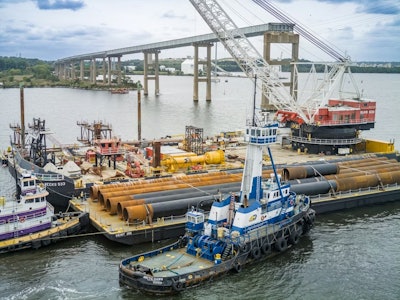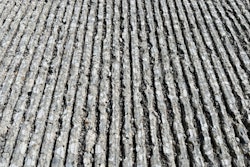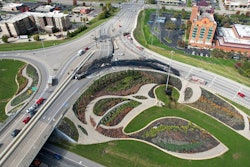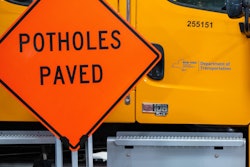
The root cause of the ship Dali’s deadly 2024 crash into Baltimore’s Francis Scott Key Bridge has finally been determined: a single loose wire.
According to a November 18 final report from the National Transportation Safety Board, an independent investigative federal agency, the ship’s collision on March 26, 2024, occurred after a loose wire in the ship’s electrical system unexpectedly opened a breaker and ultimately triggered an electrical blackout.
After briefly regaining power, the 984-foot-long containership Dali experienced a second blackout and, ultimately, lost control of propulsion and steering. It then collided with the 2.37-mile-long Key Bridge in the Baltimore Port.
 Illustration showing how placement of wire-label banding affects the way wires are seated in their terminal blocks.NTSB
Illustration showing how placement of wire-label banding affects the way wires are seated in their terminal blocks.NTSB
NTSB investigators determined the wire was not fully inserted into its terminal block spring-clamp gate, due to interference from its wire-label banding.
The resulting collision collapsed a large portion of the Key Bridge into the Patapsco River and collapsed portions of Pier 17, deck and truss spans onto the Dali’s bow and forward-most container bays. Six of the seven construction workers on the Key Bridge at the time of the collision died.
The agency’s report acknowledged the crew’s attempts to alter the ship’s course once they regained control after the first blackout, but their efforts were ineffective due to the close proximity to the bridge at the time propulsion control was initially lost. However, those efforts, coupled with action from shoreside dispatchers and the Maryland Transportation Authority, prevented a greater loss of life.
The bridge collapse has brought lawsuits against the ship’s owners, Grace Ocean and Synergy Marine. The U.S. Department of Justice sued the two companies in September 2024 and settled for over $100 million.
Progress on rebuilding the Key Bridge recently hit a new milestone as the MDTA began the bridge’s Test Pile Program.
Six test piles, measuring 8 feet in diameter, over 220 feet high and made of American steel, were barged in. They vary in thickness from 1.5 to 2 inches and will be driven into the Patapsco River – after being vibrated into place – with a pile driver.
Recently released estimates from the MDTA say a new bridge would cost $4.3 billion to $5.2 billion with an anticipated open date in late 2030.
MDTA Deflects Blame from NTSB
The NTSB’s initial report on the collision, released in March 2025, found the MDTA could have taken steps to avoid the catastrophe. The agency specifically stated the MDTA would have been aware of the Key Bridge’s vulnerability to collapse and would have been able to take steps to reduce that risk and the loss of lives had it conducted a vulnerability assessment.
In the final report, the NTSB determined MDTA was “likely unaware of the potential risk that a vessel collision could pose to their structures … despite longstanding guidance from the American Association of State Highway and Transportation Officials recommending that bridge owners perform these assessments.”
The MDTA said it is reviewing the final report’s findings and reiterating its stance that the Key Bridge’s collapse was the fault of the Dali owners and operators. The MDTA also said the Key Bridge, which opened in 1977, “was approved and permitted by the federal government and complied with those permits.”
The NTSB’s initial March 2025 report on the Key Bridge’s collapse identified 68 bridges that were built before AASHTO published its vulnerability assessment calculation for new bridges in 1991. The 68 bridges had no vulnerability assessment, and the NTSB recommended owners calculate the annual frequency of collapse for these structures using AASHTO’s Method II calculation.
Now as part of the final report, the NTSB confirmed it sent letters to 30 bridge owners urging they evaluate those structures and that all recipients have responded.














